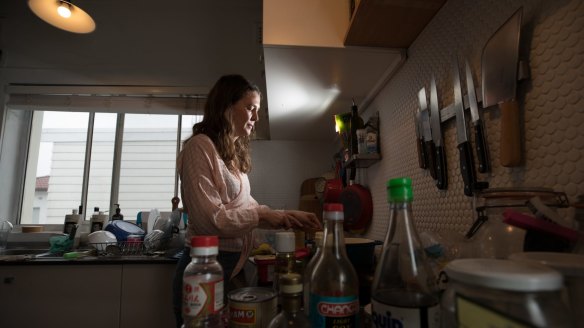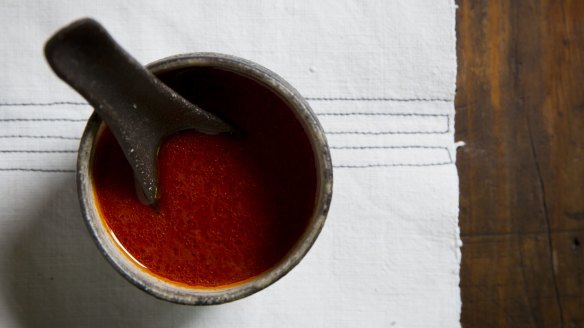From adobo to zaatar: supermarkets increase international food offerings

From adobo chillies to zaatar, major supermarkets are ramping up their offerings of international foods in response to a growing multicultural population and increasingly adventurous home cooks.
"International cuisines have grown more and more popular in Australia over the past few years," said Alistair Leathwood, chief Asia-Pacific commercial officer at market research company IRI.
"We're now seeing dedicated 'Asian' aisles in mainstream supermarkets. Of the cuisines most popular in Australia, Chinese wins top spot, followed by Italian, Thai, Indian, Mexican, Japanese, Greek, Middle Eastern, Lebanese and French."

Mr Leathwood said Japanese cuisine had experienced the most growth in the last few years.
Coles acting general manager for grocery Leanne White supported IRI's research and said the supermarket giant had seen a rise in the popularity of sushi ingredients, seaweed snacks and Japanese Kewpie mayonnaise.
"Korean foods and hot pot are now also on trend and you will start to see more of these products in the [international] range in coming months," said Ms White.
Over the past five years, Coles' international food sales have averaged more than 10 per cent growth year-on-year. Major supermarket rival Woolworths reported the same level of growth in the category over the past three years.
"Australia is a fast changing and increasingly culturally diverse nation," said Woolworths head of international foods, Serena Anson-Cope. "We're seeing shoppers become far more experimental with flavours across all cuisines as more of us travel the world."
Sophie Roberts is an avid home cook and co-host of Sydney-based podcast Highly Enthused, which provides food and lifestyle product recommendations for consumers. The 31-year-old suggests international ingredients are also increasing in popularity because Australian millennials have grown up with access to a wider variety of cuisines than previous generations.
"Now those millennials are sourcing ingredients they've tasted in Thai, Middle Eastern and Japanese restaurants to use at home," she said.
Ms Roberts said a personal decision to eat less meat a few years ago means she now buys more international condiments from Harris Farm and other grocers.
"A lot of international cuisines tend to have deeply flavoured condiments to make things taste delicious without using animal fat. The less meat I eat, the more my pantry grows with weird sauces and chilli pastes like sambal, harissa and gochujang."
Mainstream supermarkets are increasingly tailoring instore product ranges based on local customer demographics, too.
Coles in Doncaster, Victoria, for example, was recently refurbished to implement an extended Asian foods range at the front of the store and now offers more than 500 new product lines tailored mostly to customers from Hong Kong and China.
Over the past six months, the retail giant has also increased its kosher range by 50 per cent in Elsternwick, Victoria, and expanded the Middle Eastern range of Roselands store by 35 per cent in.
Similarly, to meet the specific needs of a growing Chinese population in Sydney's northern suburbs, Woolworths now stocks 30 varieties of soy sauce at its Macquarie Ryde store, compared to five varieties of the condiment at its Kings Langley location.
"We know a one-size-fits-all approach to product ranging will not deliver what our customers want and need," said Ms Anson-Cope.
"Our long-term goal is to deliver a tailored range to every community."
Five international foods on the rise (and how to use them)
Chipotles in adobo
Chipotle chillies are dried and smoked jalapenos; adobo is a tangy tomato-based sauce common to Mexican cooking. Combined and canned, they provide depth to marinades, sauces and even bloody marys, although the fiery mix should be pureed before it's added to vodka.
Gochujang
US sales of Korea's favourite pungent red chilli paste grew by 31 per cent in the past 12 months, and it's beginning to make a similar splash in Australia. Gochujang can be used to enhance meat, vegetables, soups and stews, and a little bit of the fermented product goes a long way.
Pomegranate molasses
Another ingredient to use sparingly, this pomegranate juice reduction provides extra tang to dressings and dips, and a tartness to Middle Eastern fish and chicken recipes. Fans of a sweet-sour punch can drizzle a teaspoon over vanilla ice-cream.
Tamari
A Japanese form of soy sauce and top dipping choice for gyoza and other dumplings. Traditionally made from the byproduct of miso paste, tamari is often richer and less salty than its Chinese equivalent.
Zaatar
The make-up of this spice mix varies across Middle Eastern regions, but most zaatar found in Australia will contain sumac, toasted sesame seeds, oregano and thyme at a minimum. It enlivens almost every savoury food it touches, especially flatbread, feta, barbecued lamb and roast chicken.
Restaurant reviews, news and the hottest openings served to your inbox.
Sign up- More:
- Restaurant news
